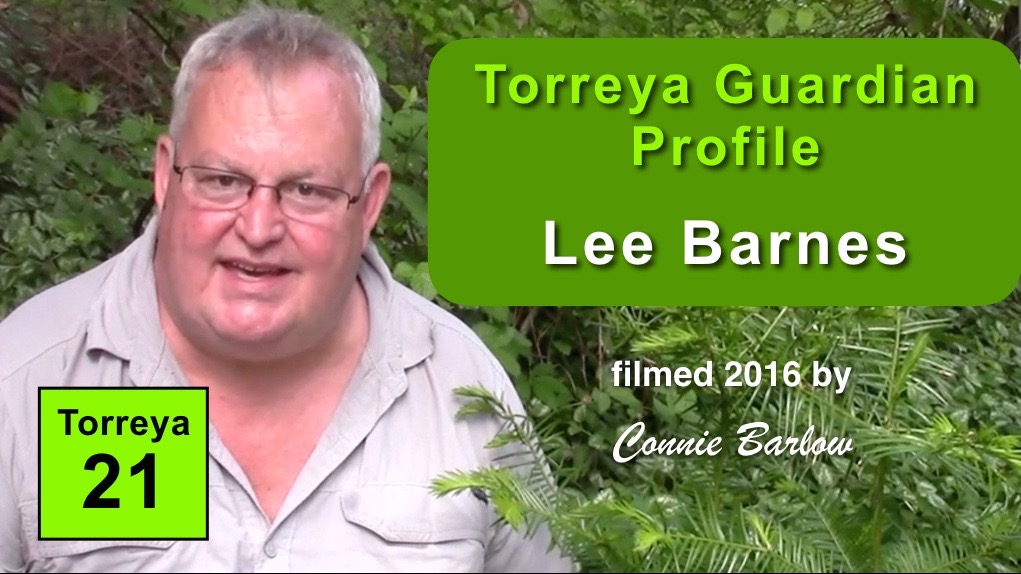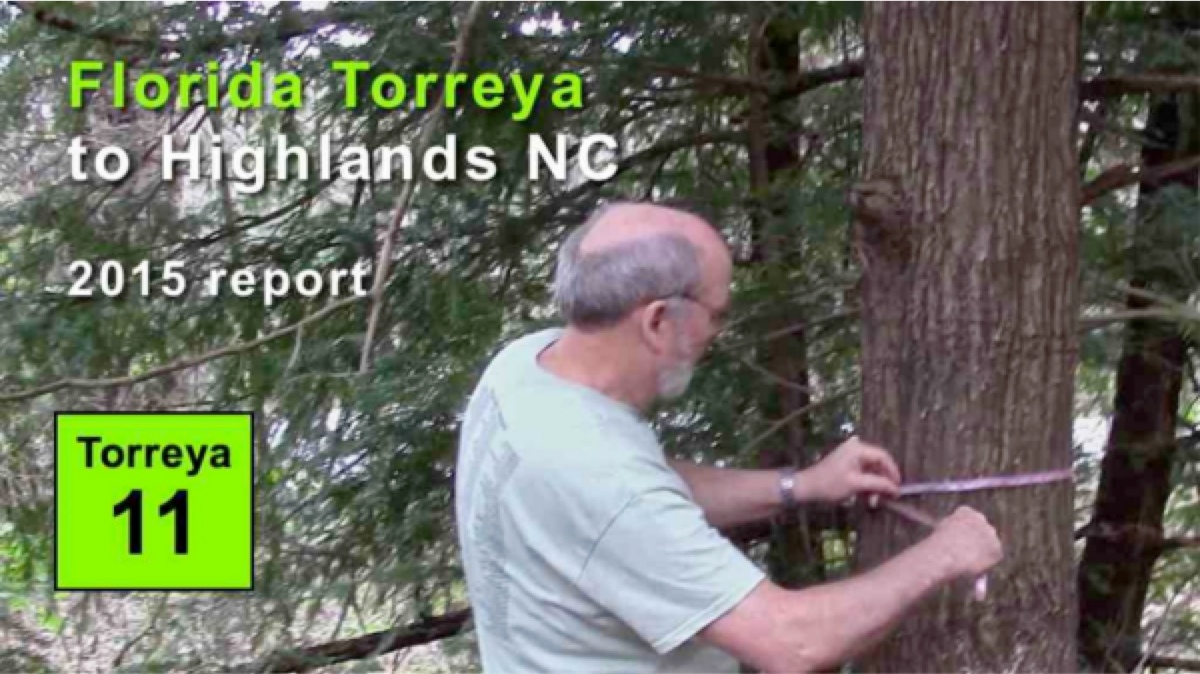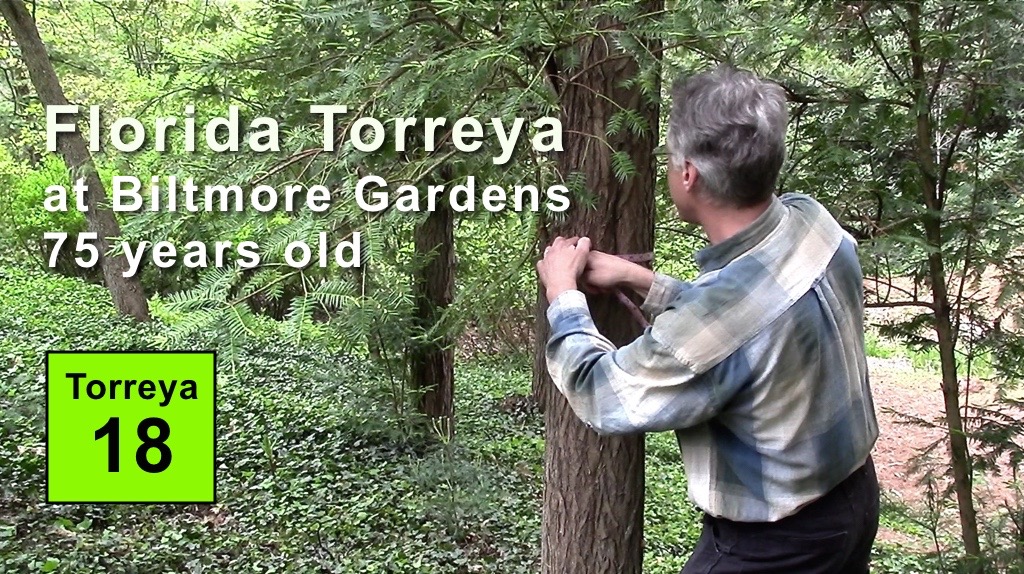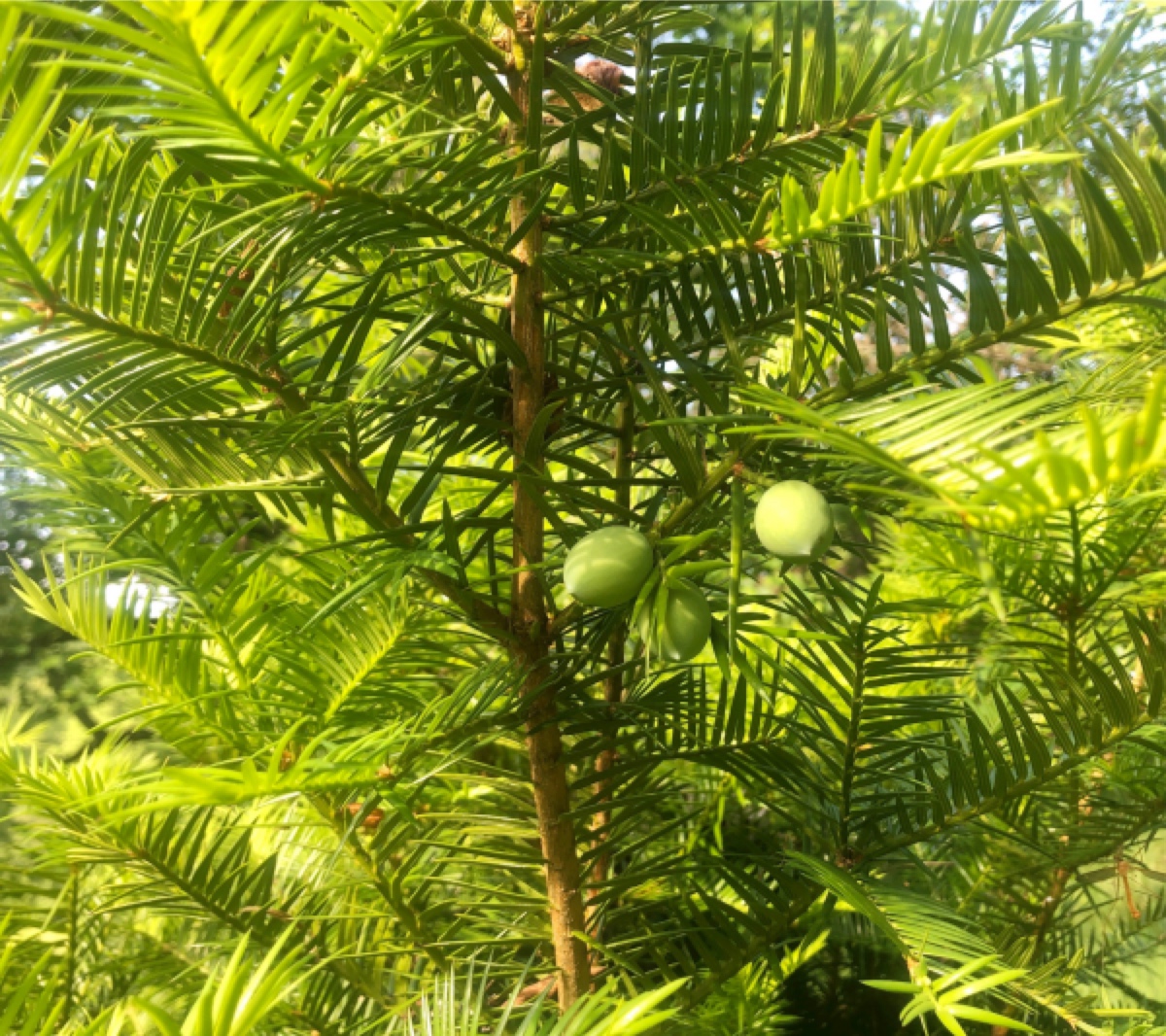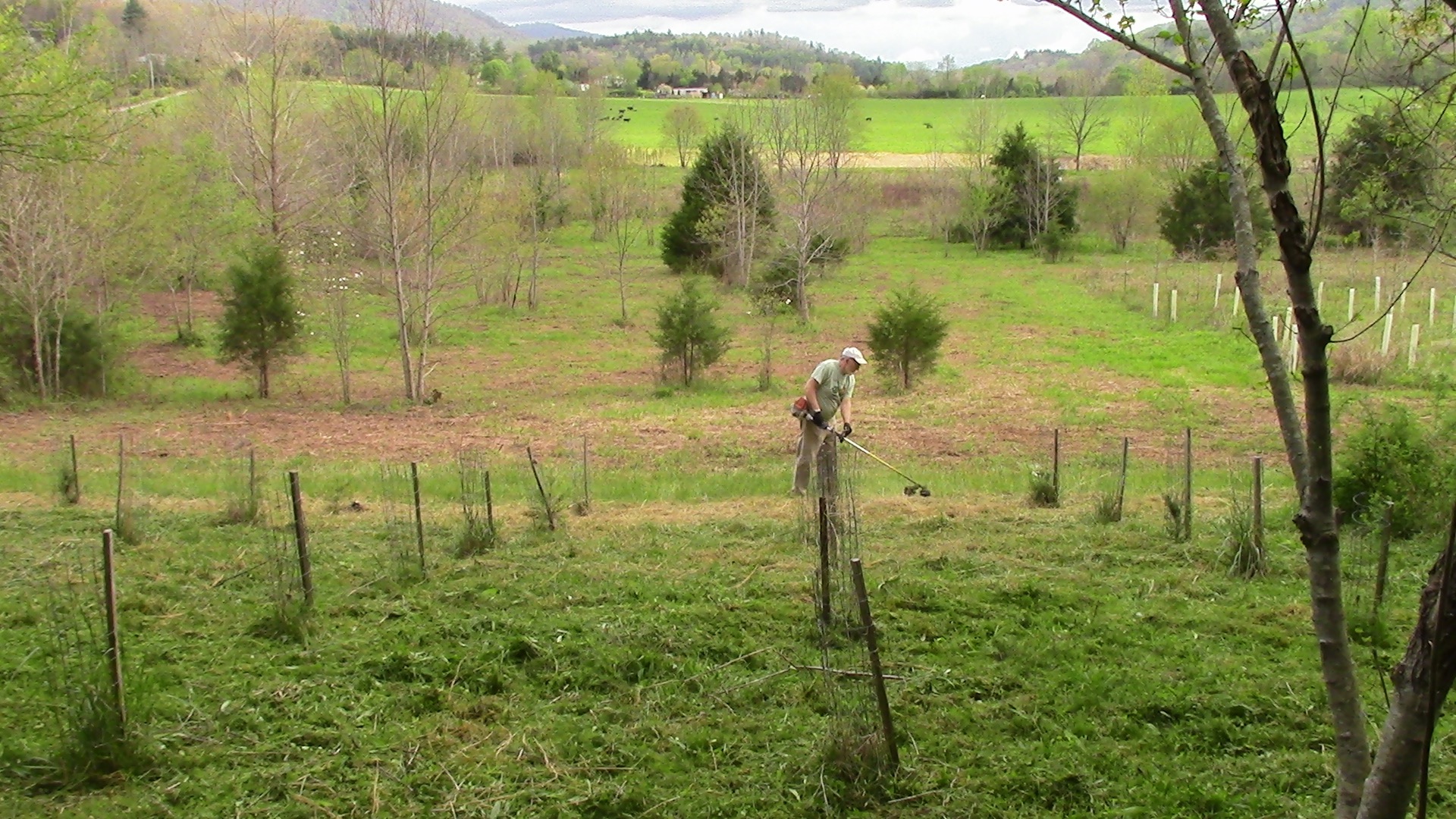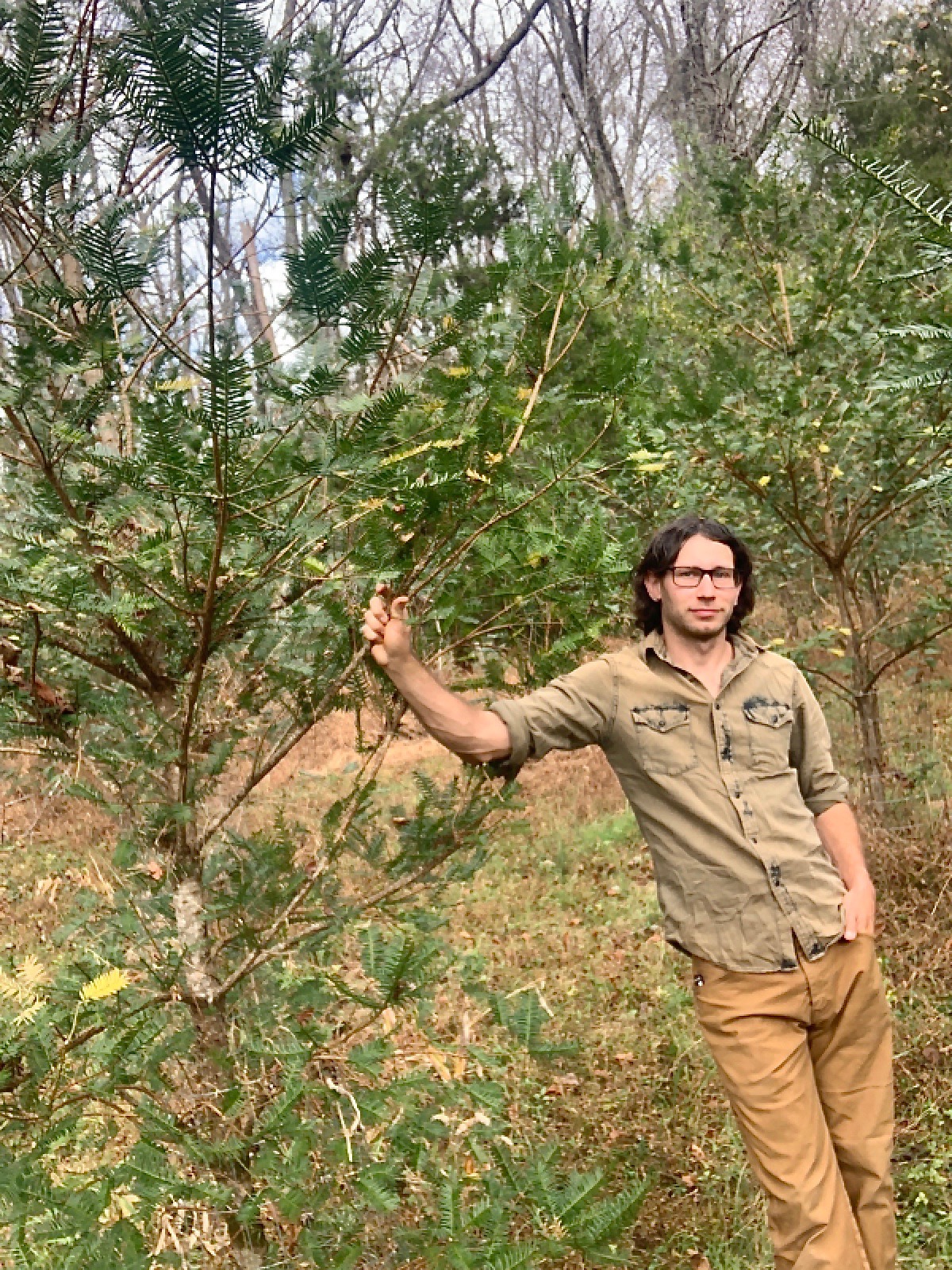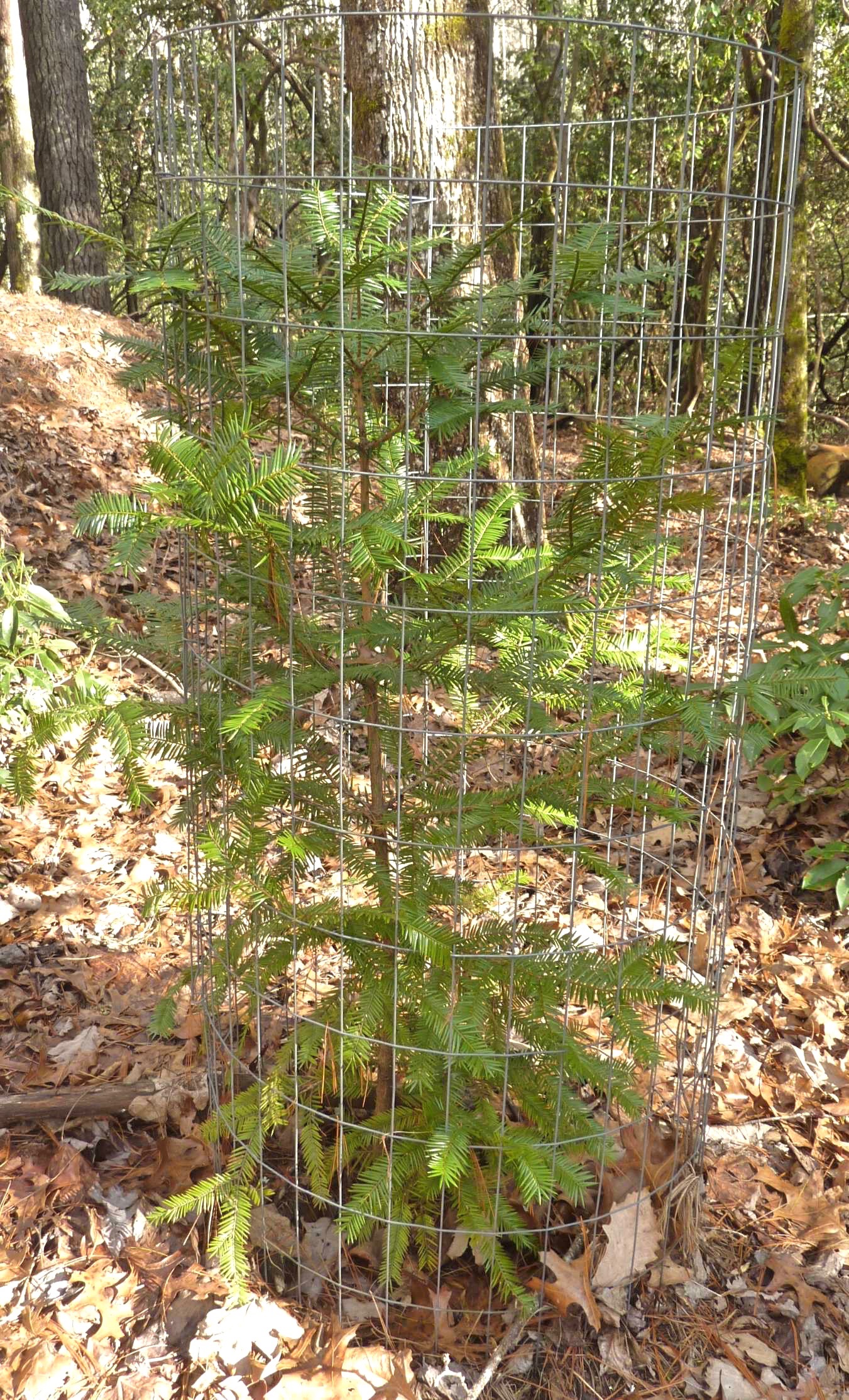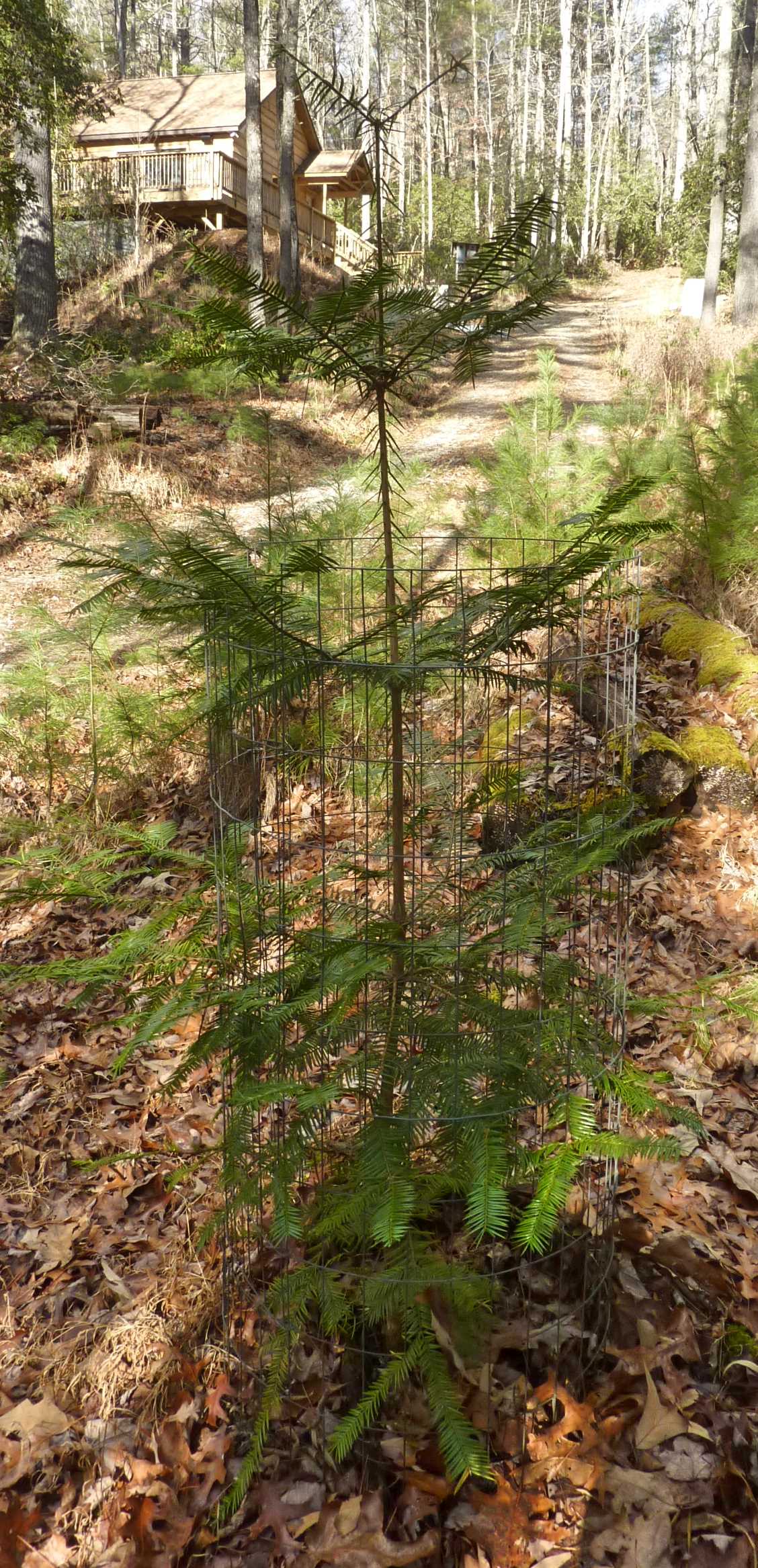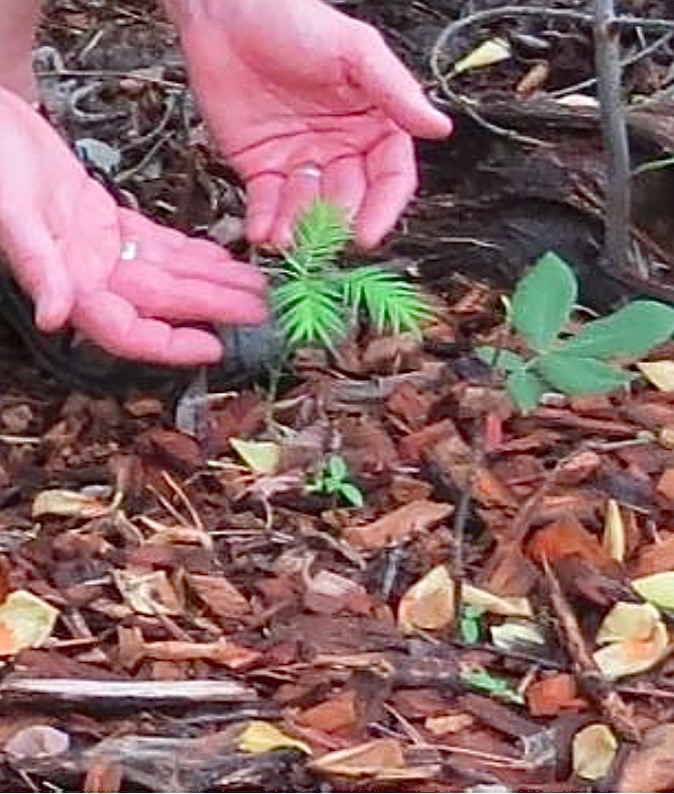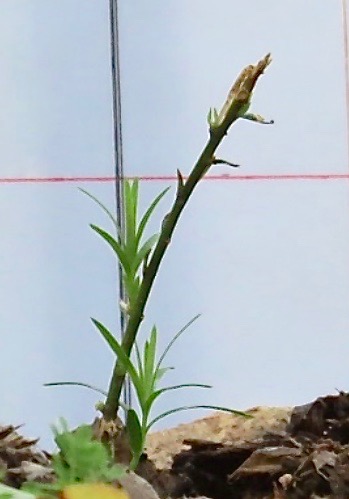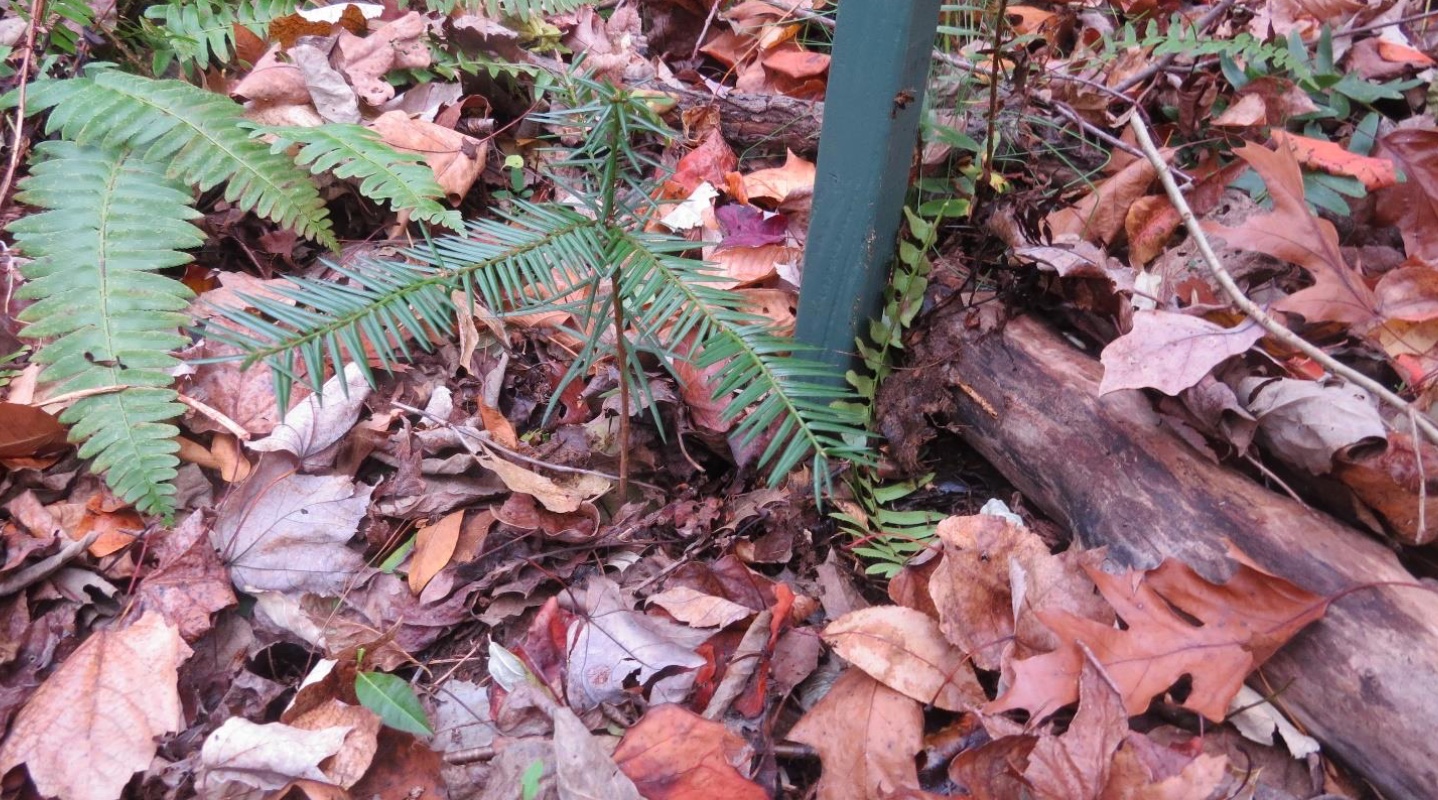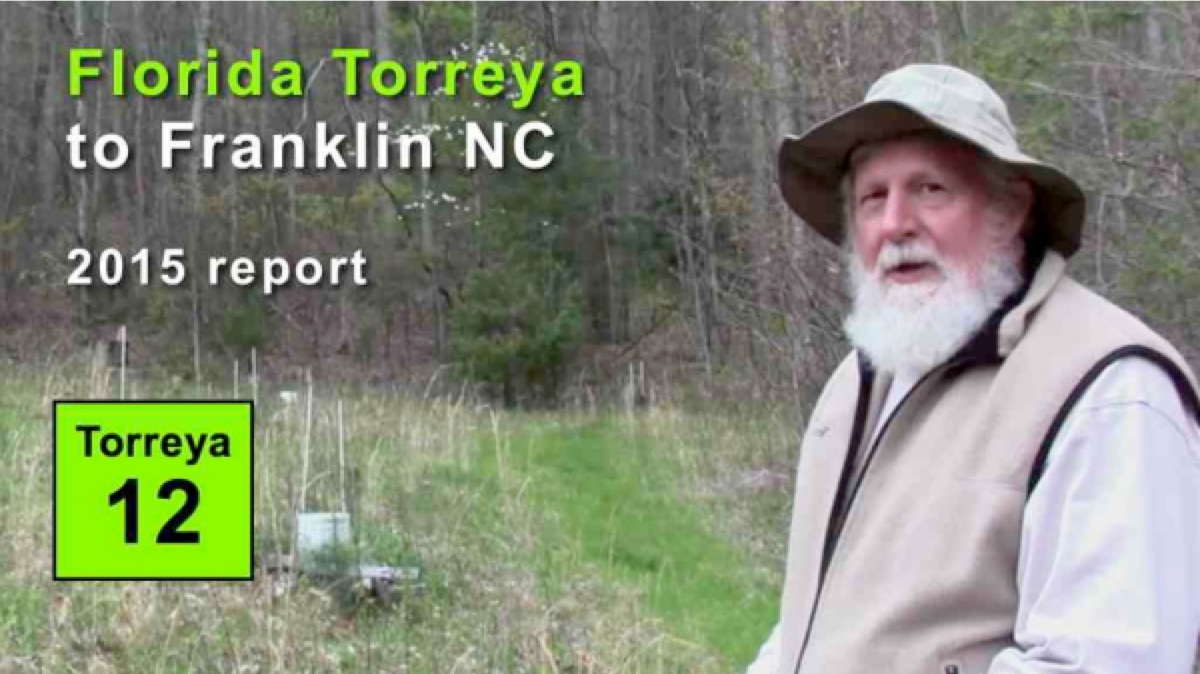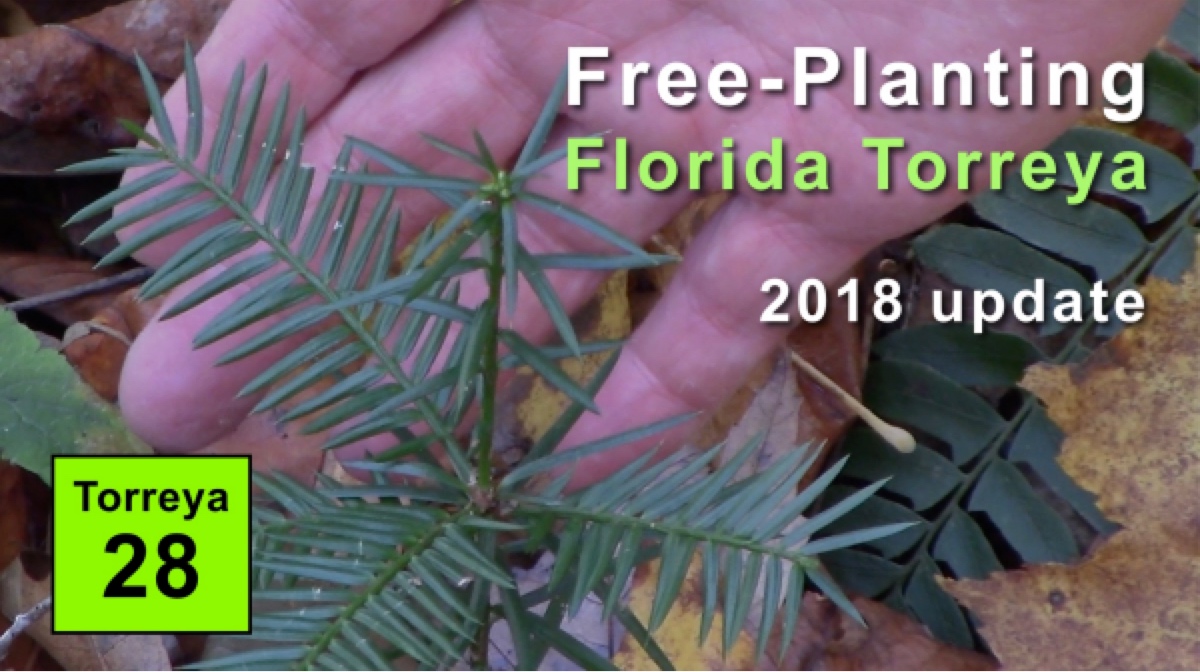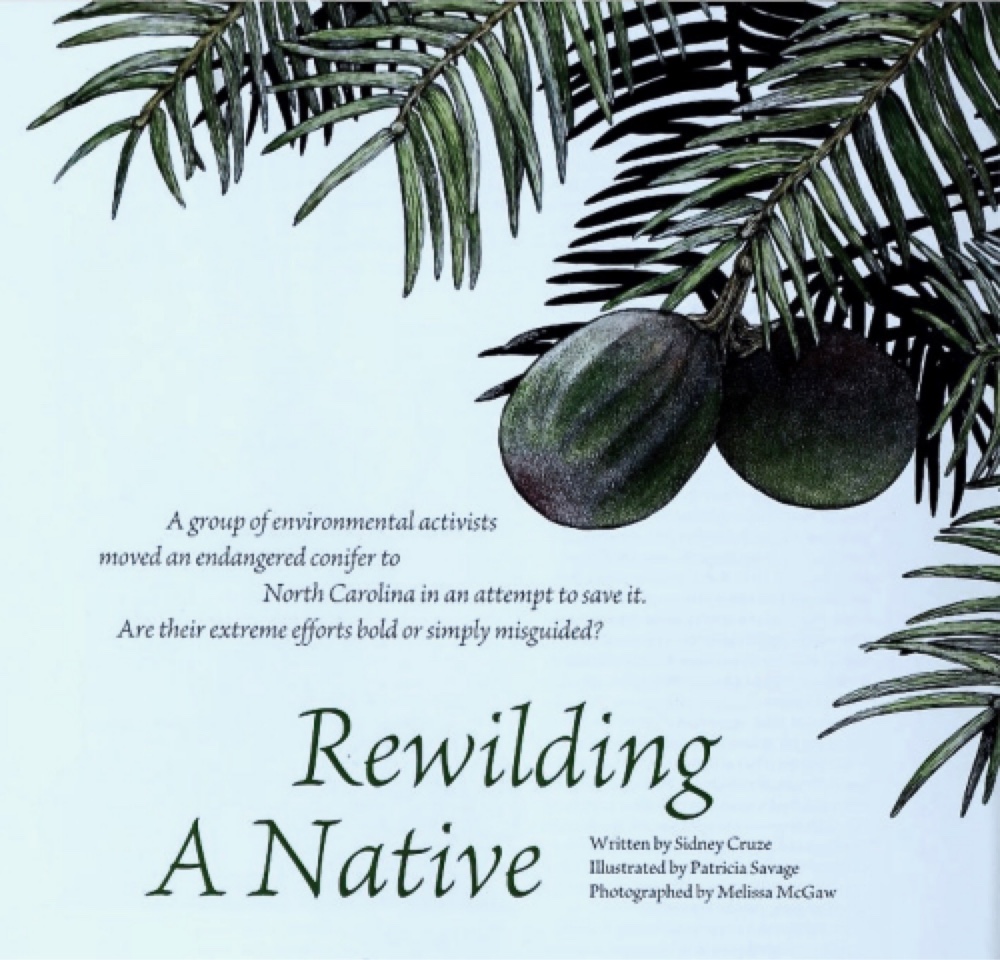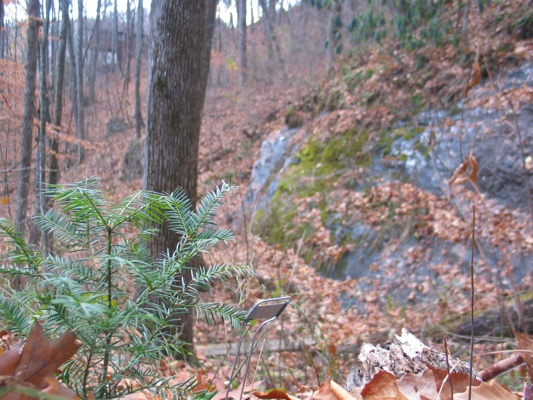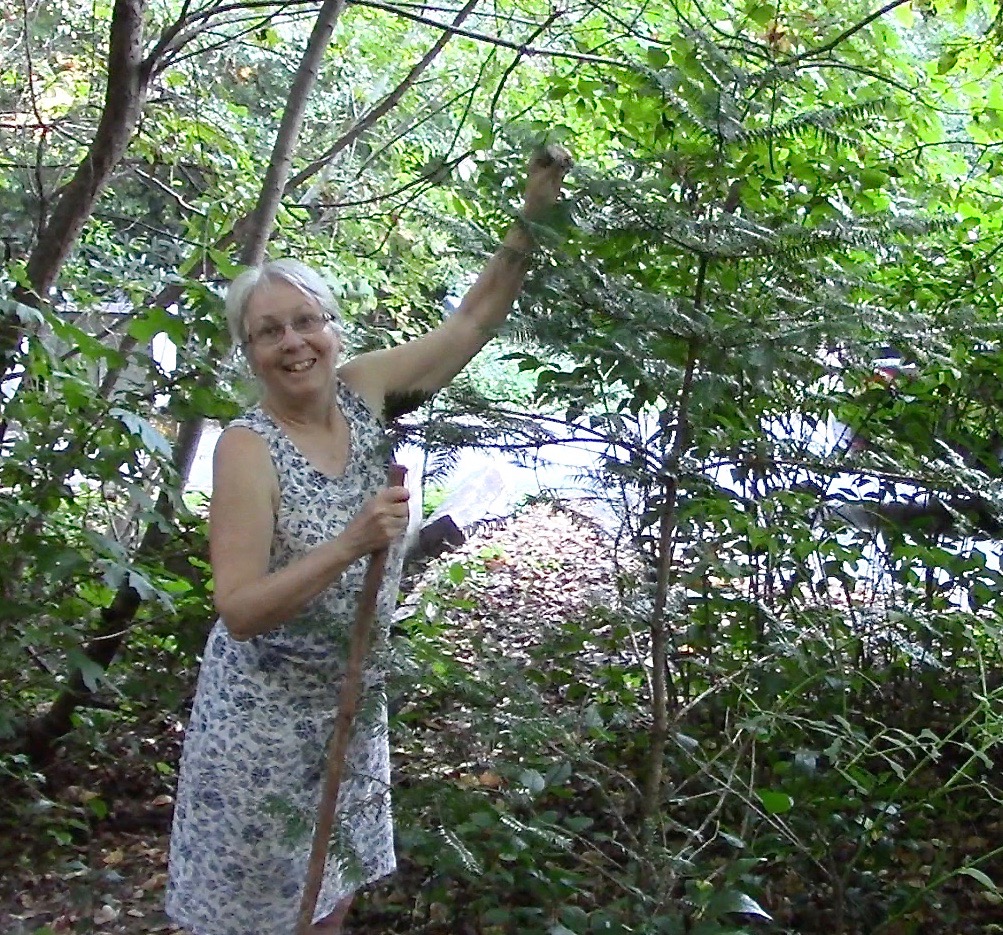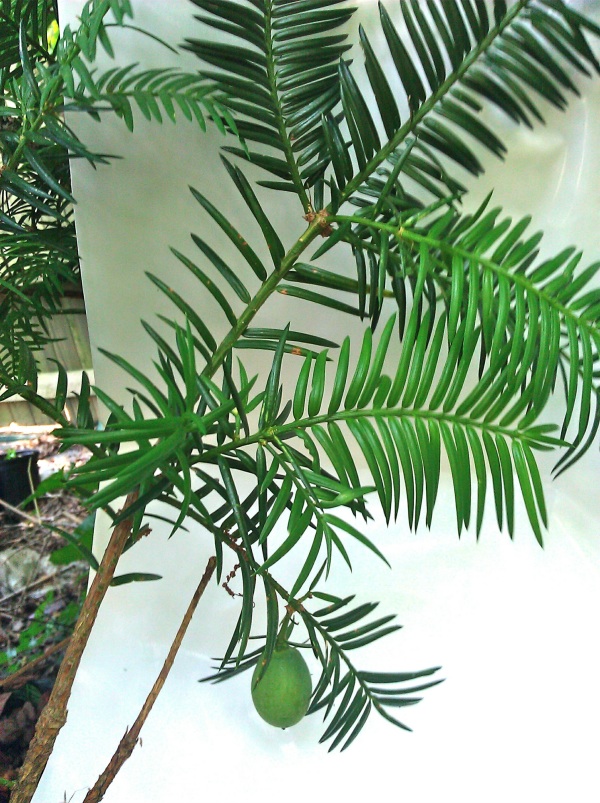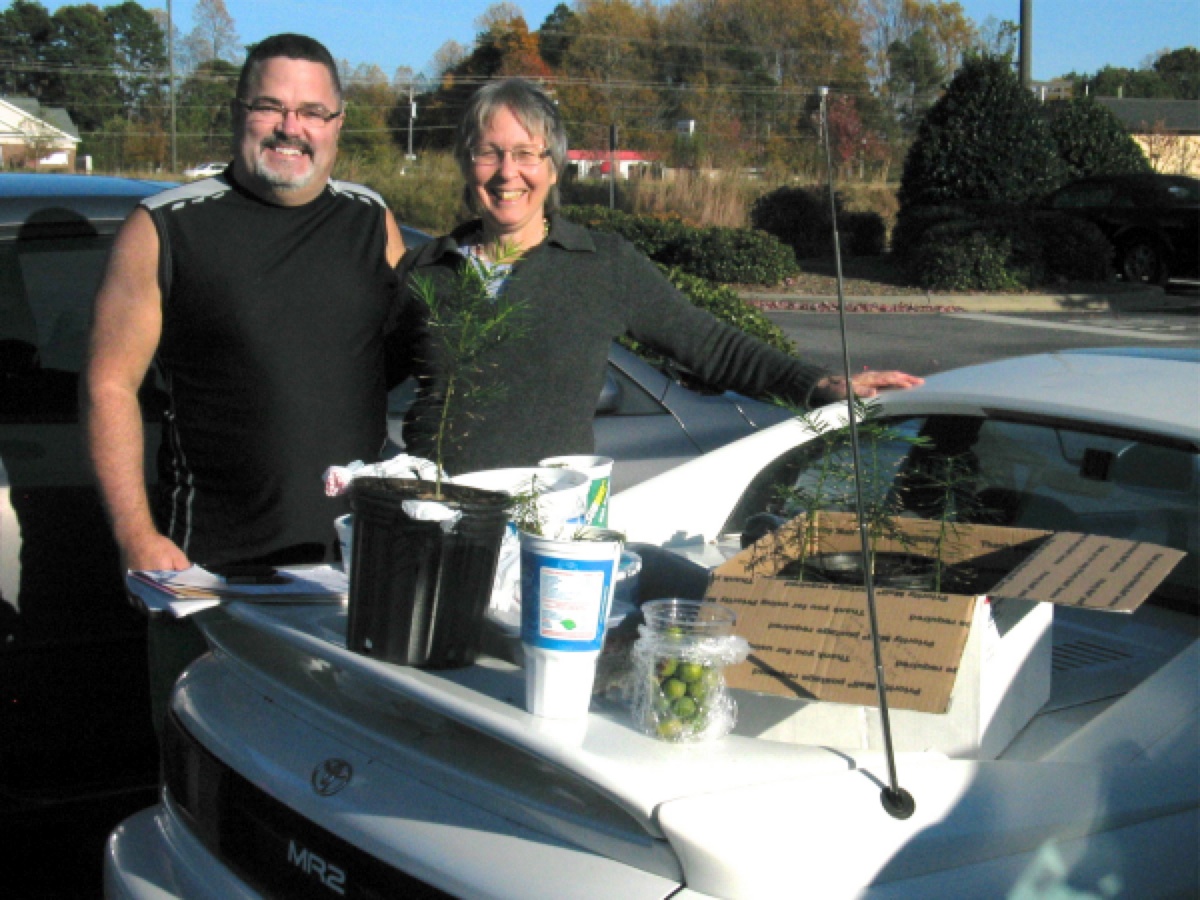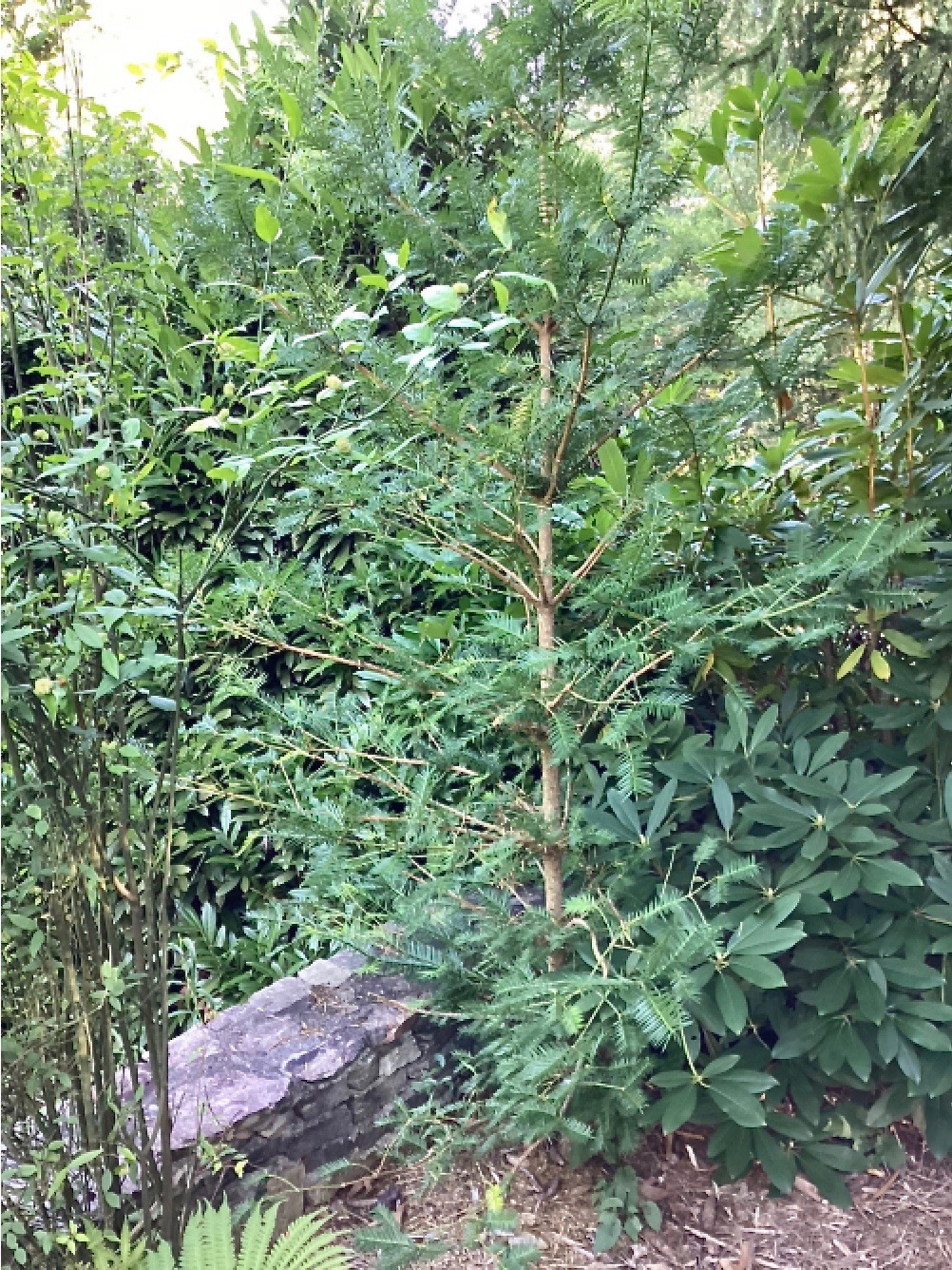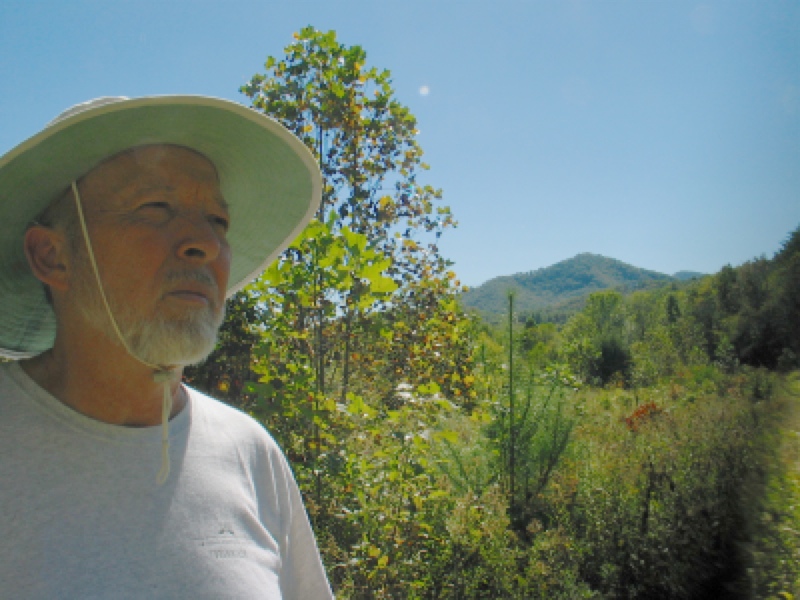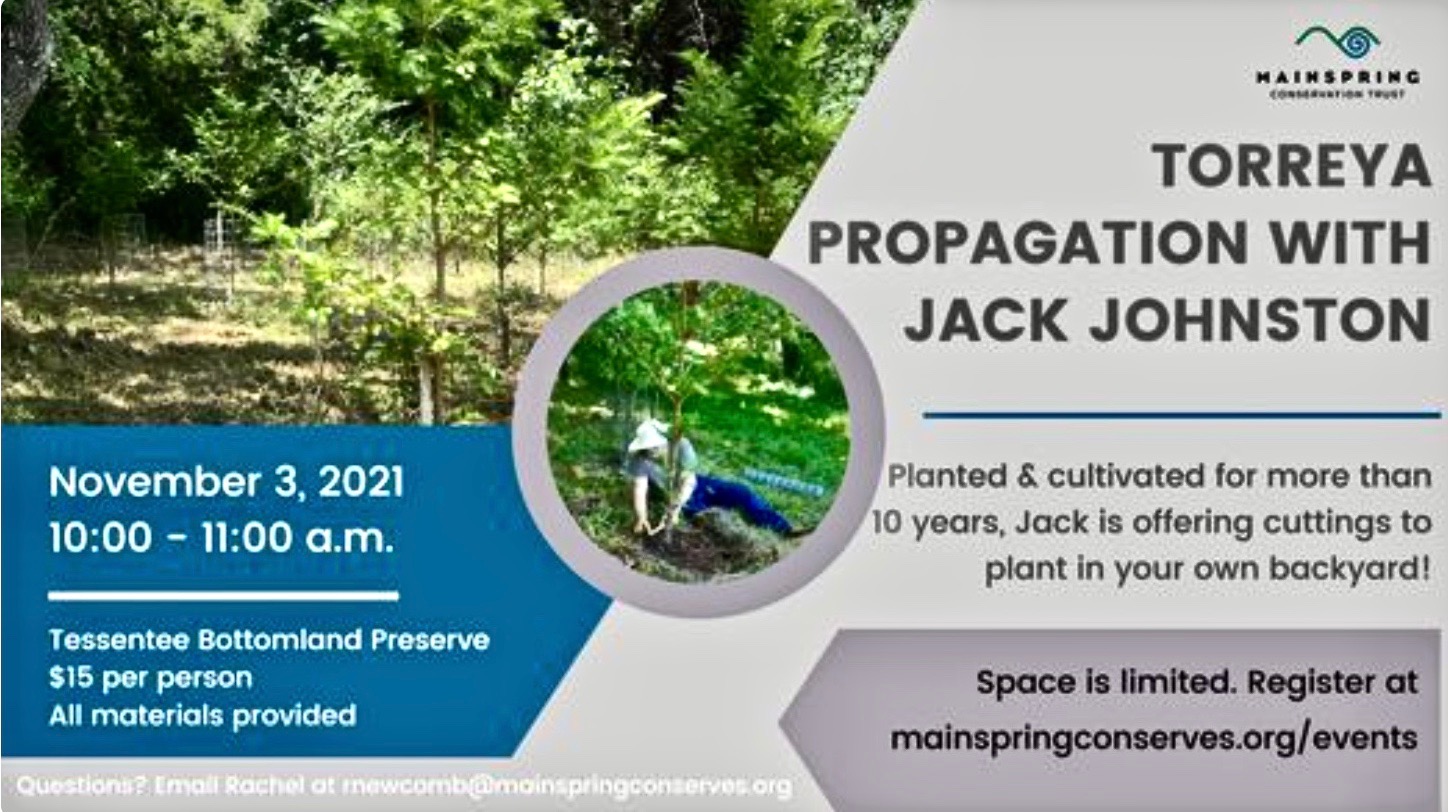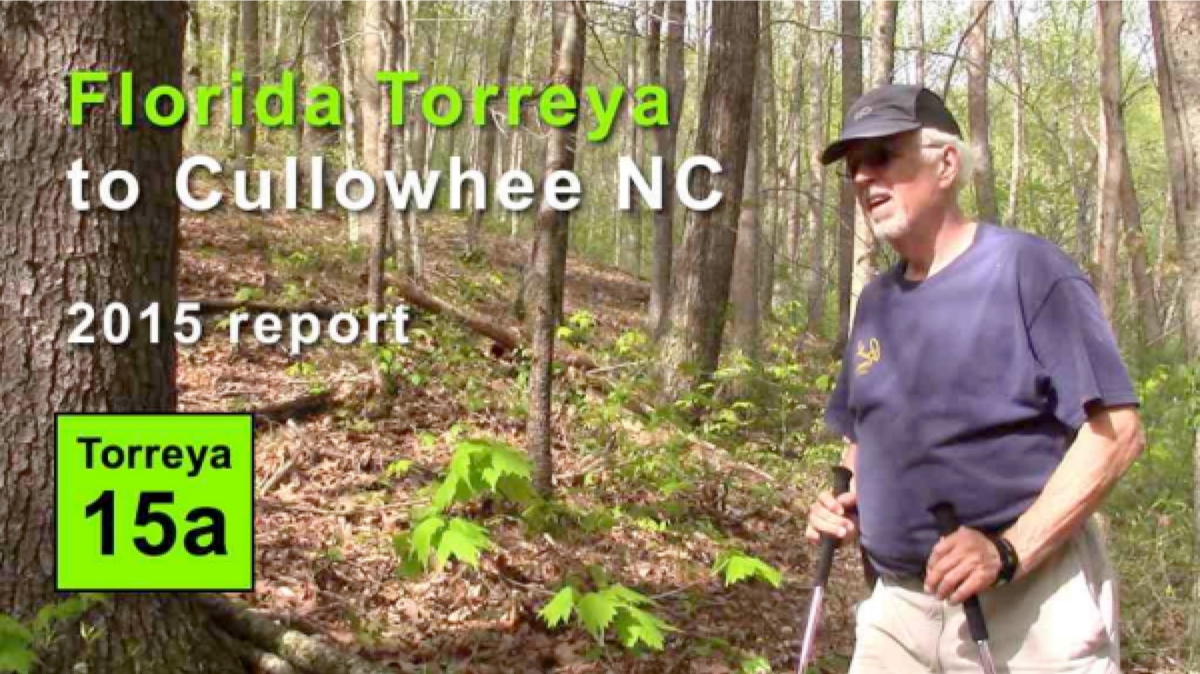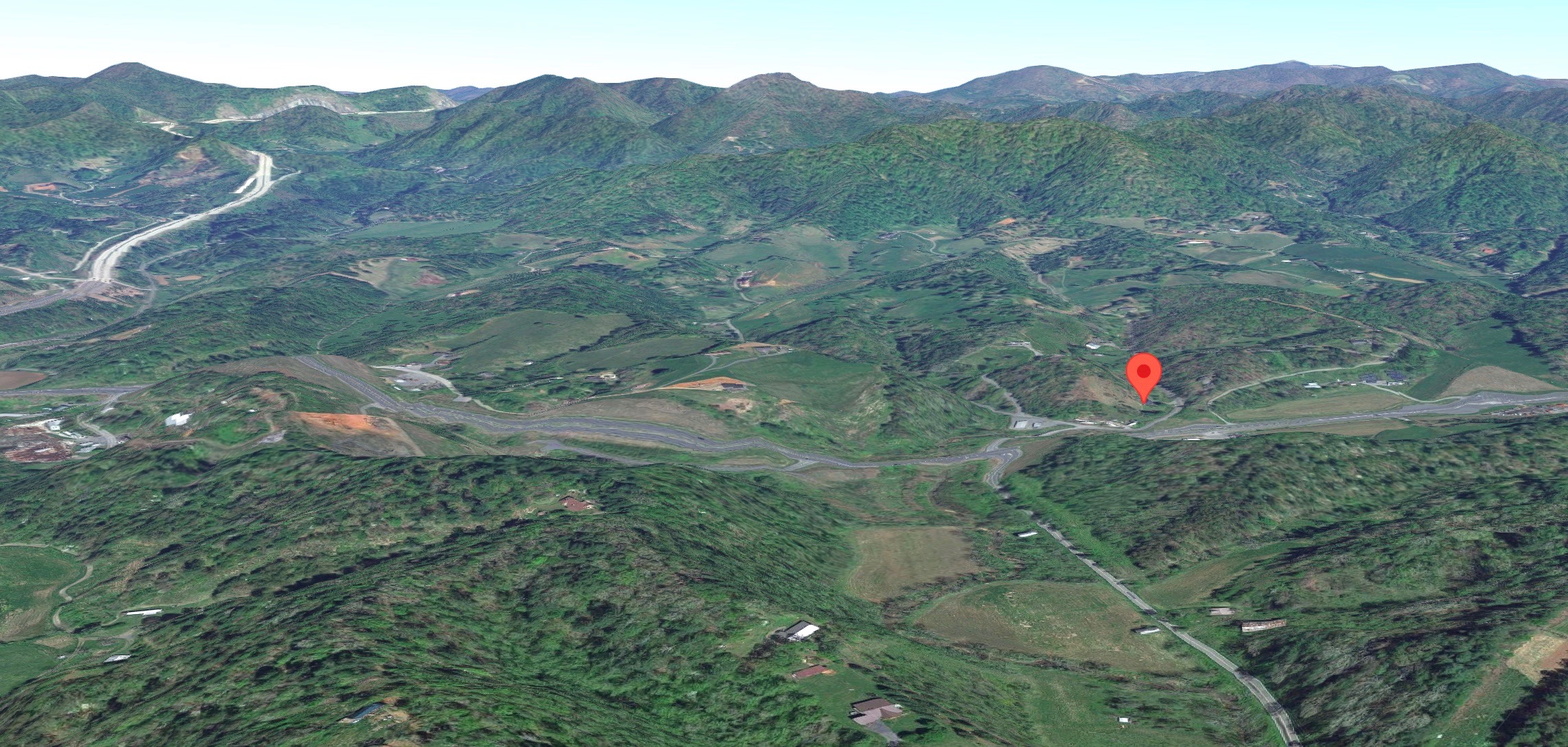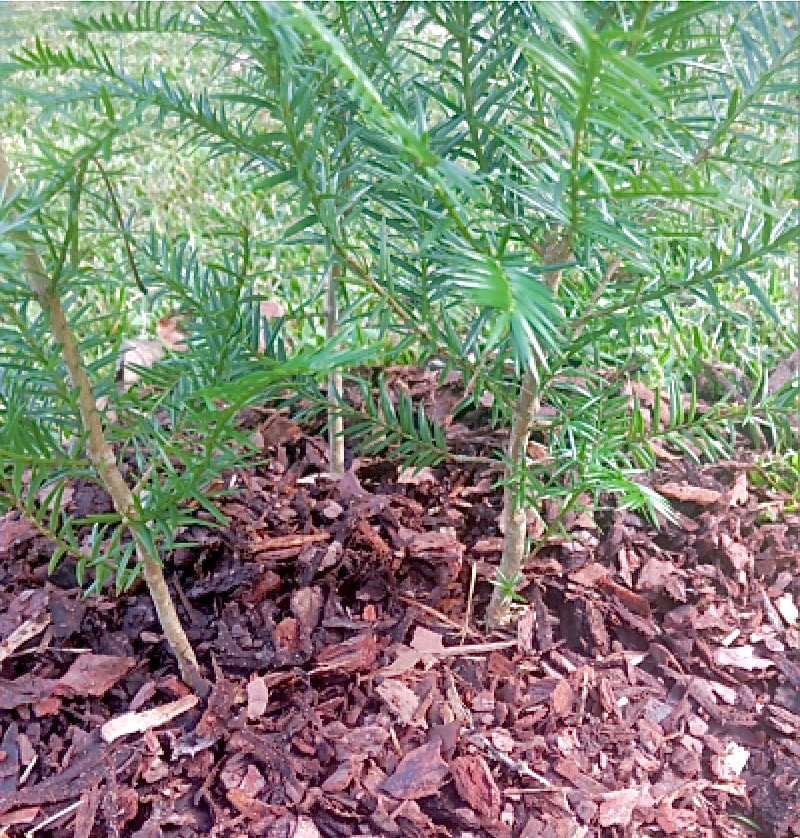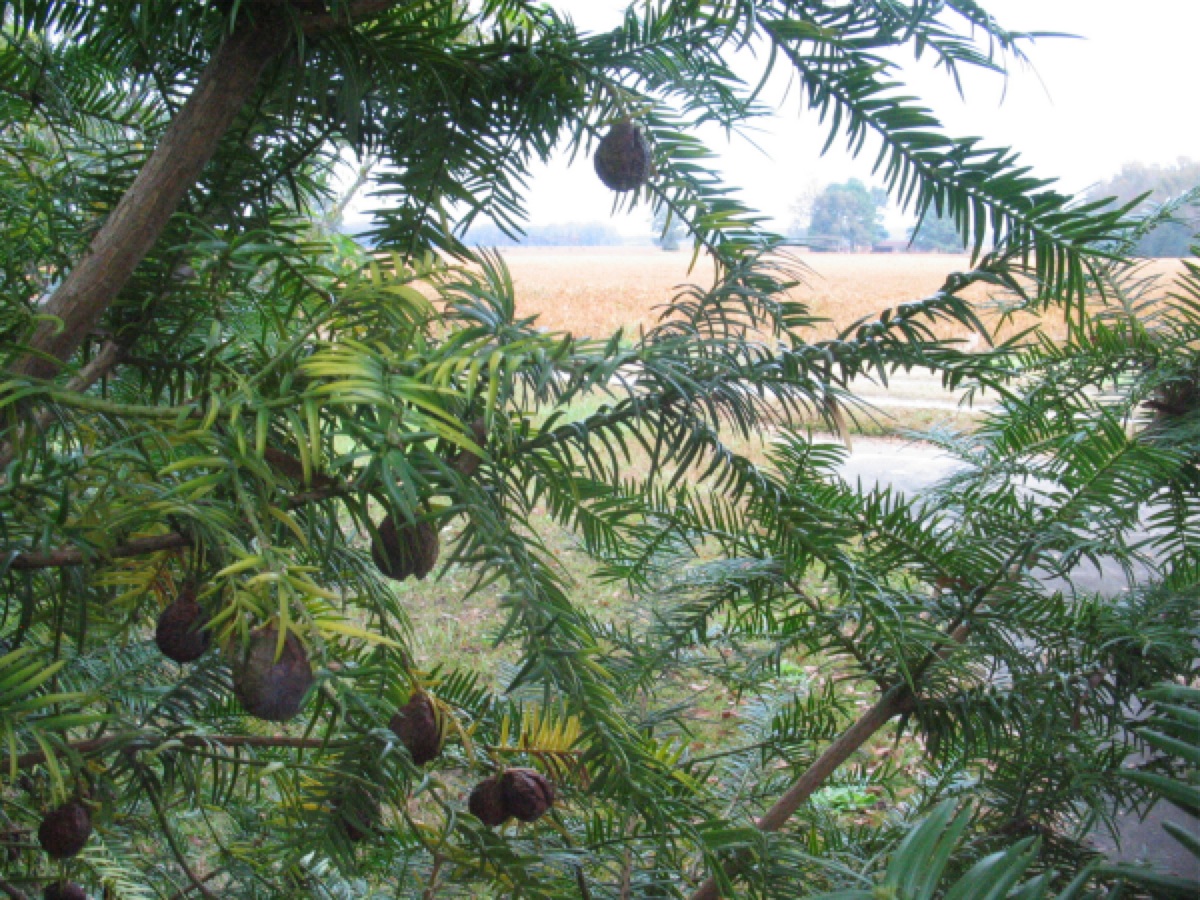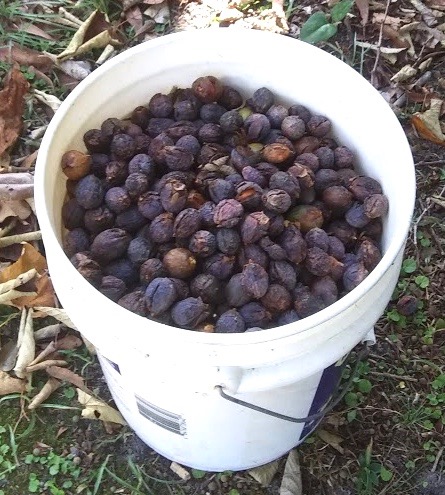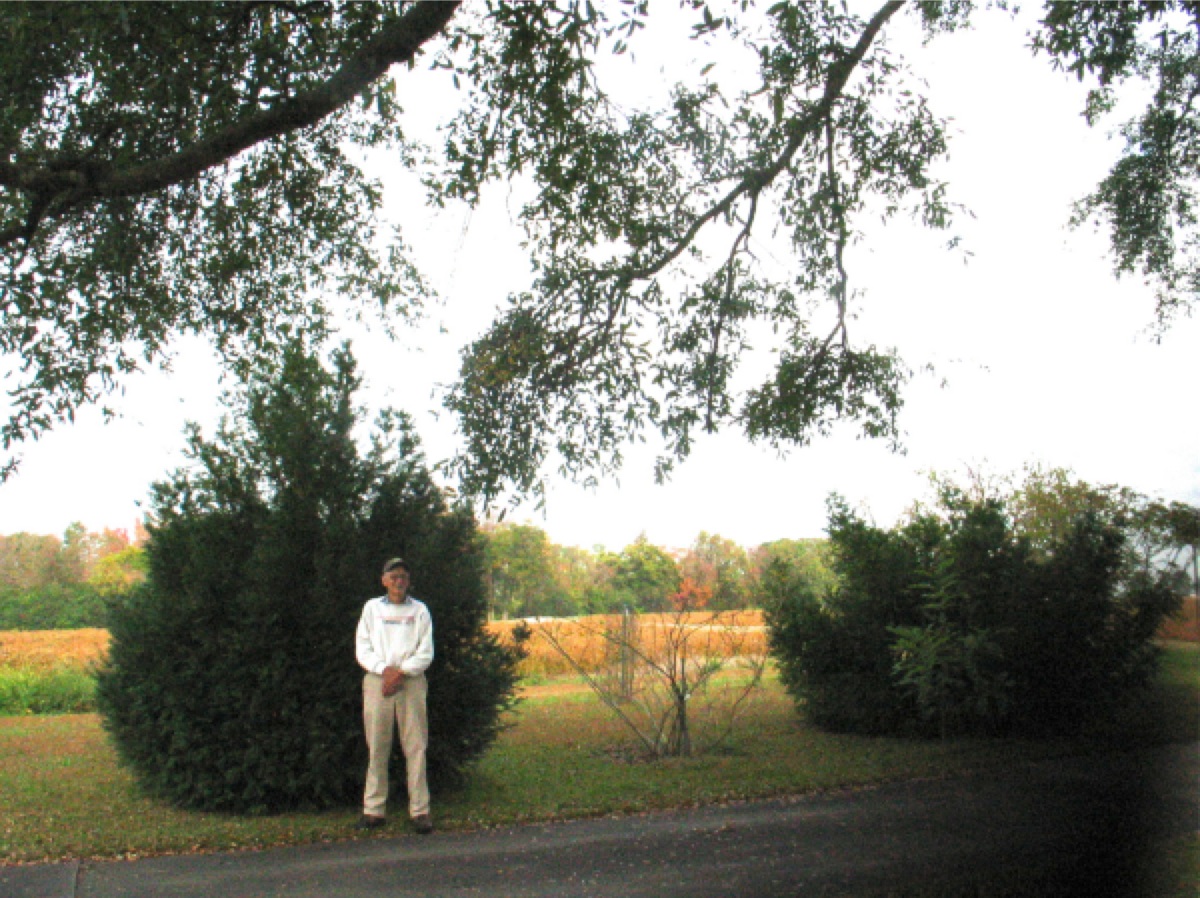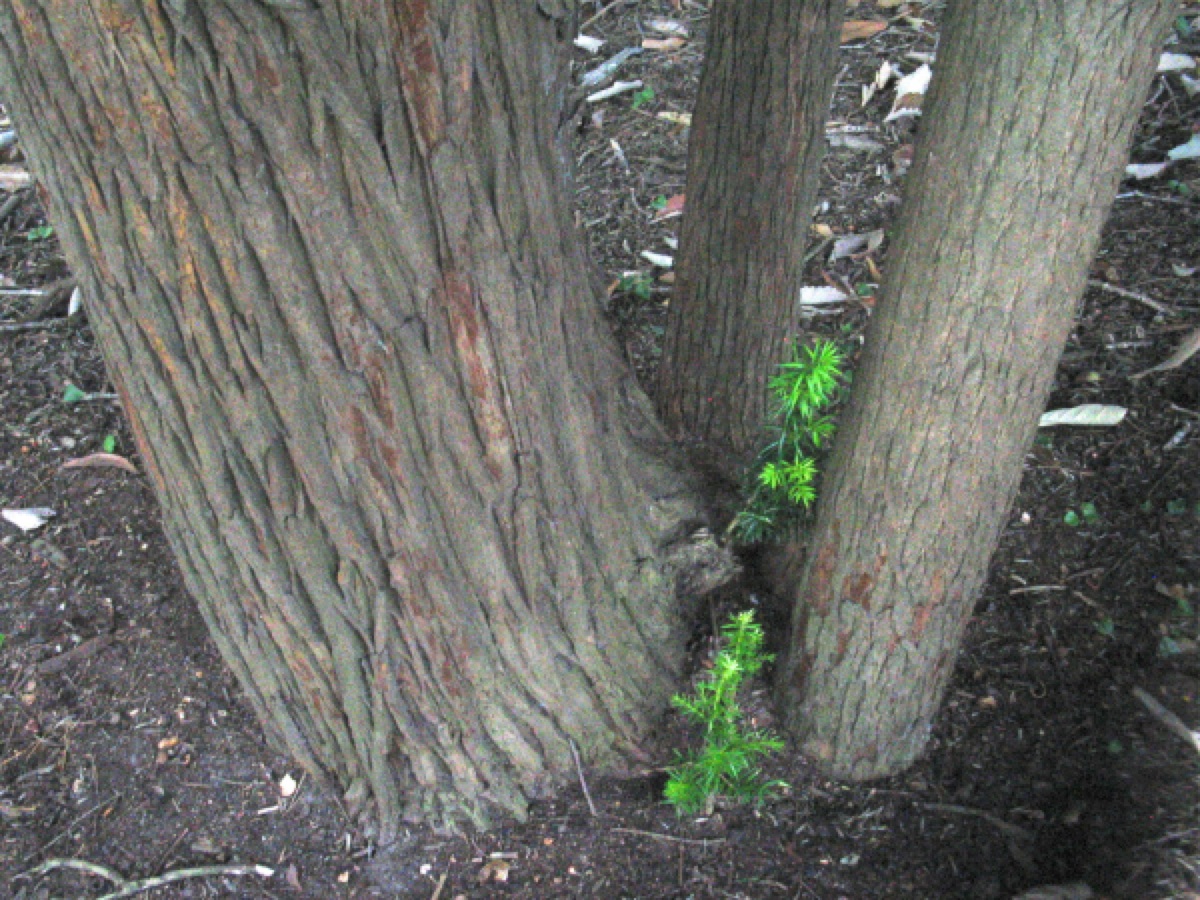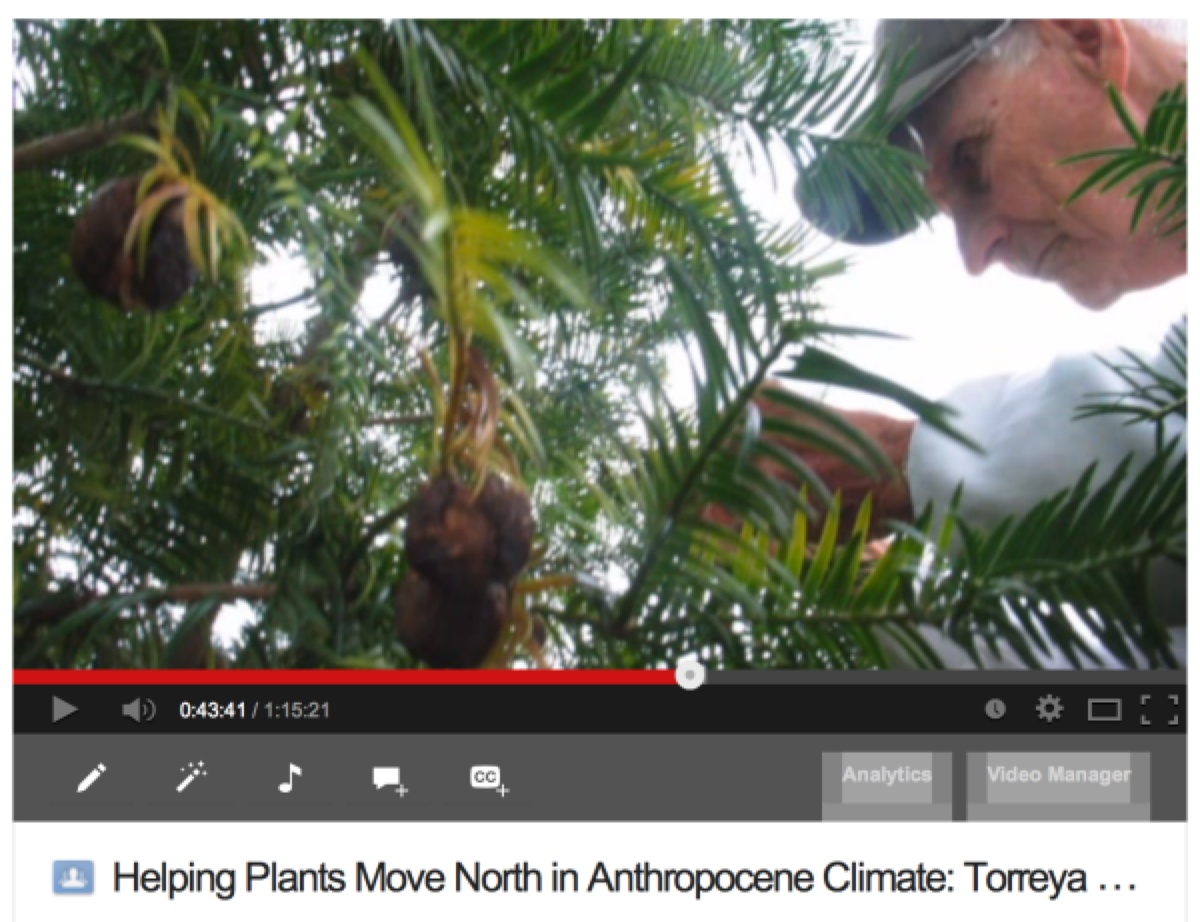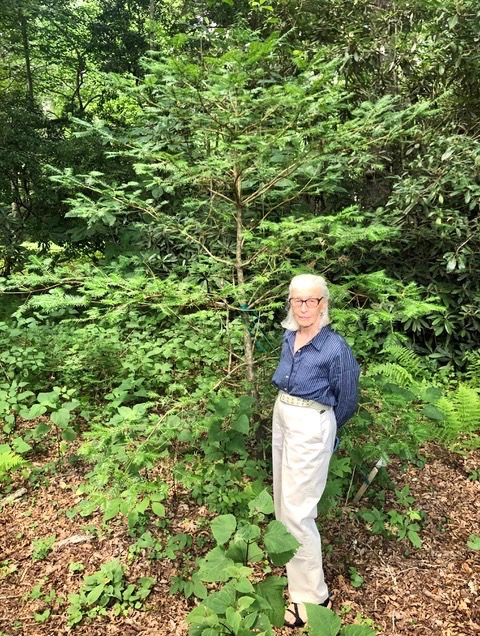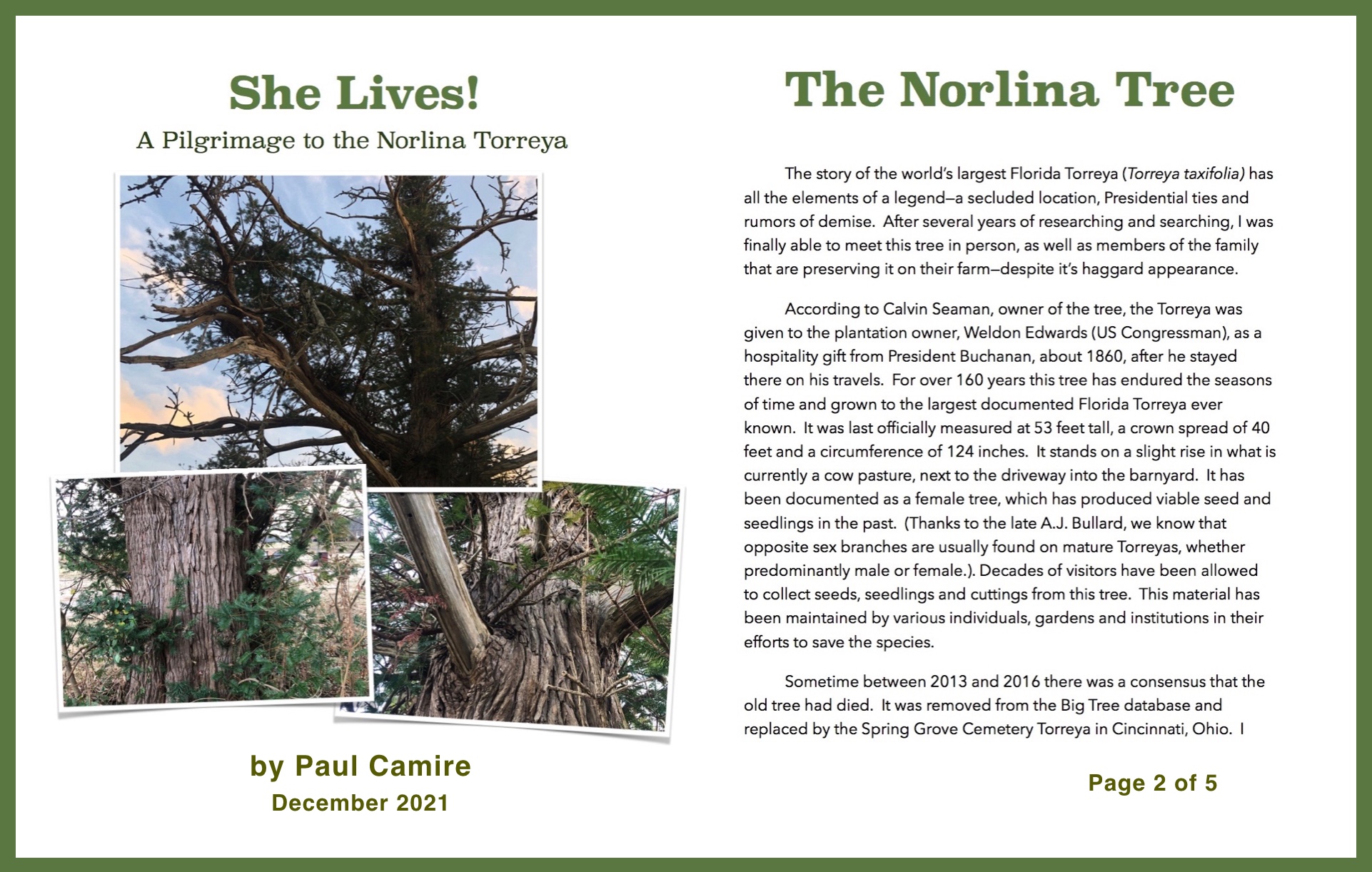BACKGROUND: At least since the last glaciation of the Pleistocene, the two U.S. species of genus Torreya have been found only in California and along the Apalachicola River of the Florida panhandle. Nonetheless it is postulated that the Apalachicola species of Torreya (T. taxifolia) would have been native to the southern Appalachians and possibly further north during previous interglacials and warm epochs of the Cenozoic. NORTH CAROLINA GROVES OF TORREYA: Torreya Guardians is aware of or actively involved in the below list of sites of Torreya taxifolia propagation in NORTH CAROLINA. Recommendation: First watch the 2016 video summary of early efforts in North Carolina by Lee Barnes:
HIGHLANDS TORREYA WEBPAGE with photos VIDEO: FL Torreya to Highlands NC: 90 years of de facto rewilding (2015)
2. Biltmore Gardens, ASHEVILLE, NC: BILTMORE TORREYA WEBPAGE with photos.
VIDEO: Florida Torreya Grove at Biltmore Gardens NC: 75 years old
• Cowee Valley, NC (8 miles north of Franklin)
Because Torreyas are slow-growing, the only way they can maintain full sun for growing is where humans take care to mow, brushcut, or weed-whack their surrounds.
The huge advantage of full-sun planting: earliest seed production.
PHOTO LEFT: May 2023 shows the first year of seed production underway!
See the Cowee Valley, NC webpage for photos and reports of ongoing results.
• Tessentee Bottomland Preserve:
• Brevard, NC
His project began with 2010 and 2011 donated seeds.
The two tallest of Buford's 14 total torreyas are shown in photos at left. Each is 71 inches tall. The shortest (in the driest site) is 13 inches tall.
All torreyas are caged. Buford reports that in his neck of the woods, uncaged trees of this height risk damage by buck deer rubbing off antler velvet. Even though some of the lower branches extend beyond the cages, no browsing is evident on those unprotected leaves.
• Greensboro, NC: NELSON and ELAINE STOVER began their participation in autumn 2013, becoming "free-planters" of torreya because they put seeds directly into the soil in their regrowth forest. Visit their ongoing, photo-rich reports at Greensboro, NC.
Of the 30 seeds planted in November 2013, 22 had become little seedlings within the first four years. This is a remarkable rate of success, likely attributable to their planting the seeds 3 inches deep — so less susceptible to seed-eating rodents.
Also of note is that 4 of those seedlings emerged only late in the fourth year.
Twenty more seeds were planted November 2015; the first 7 of which appeared as seedlings between spring and summer of 2017.
All seeds had been "free-planted" directly into the soil of the Stover's regrowth hardwood forest, with no overlying rock or wire protection. Even after the seedlings emerged, they have never been caged. Hence, they are continuously susceptible to browsing by creatures great and small.
PHOTO BELOW LEFT shows that Torreya is marvelously capable of regrowth after browsing by sending up a new leaders — both from the remaining original stem and as a basal sprout arising from the root crown.
PHOTO BELOW RIGHT: This is one of the only Stover torreyas that did not suffer early browsing. Perhaps it was camouflaged during the winter by the evergreen Christmas Fern you can see alongside. (We have since advised all free-planters to seek out Christmas ferns as close neighbors for torreya seeds.)
• Franklin, NC: RUSSELL REGNERY, who participated in the July 2008 planting of 31 seedlings in the Waynesville area, the very next month planted 10 seedlings purchased from Woodlanders Nursery onto his 35 acres (3,600 - 4,000 foot elevation on the slope of Black Rock Mountain). Access his REPORT and periodic updates. In addition to photographs and report updates, you will find linked from the Franklin Torreya webpage two videos by Connie Barlow during visits to the Regnery property:
Russ Regnery leads Connie Barlow on a tour in 2015 of his young torreya trees planted in 2008. Topics of discussion include (1) the advantage of sun-shading screen during the early years, (2) how Torreya is vulnerable to winter sun and wind scalding/dessication if not protected by a canopy, (3) advantages of planting near nurse trees. "Free-planting" seeds from the 2014 seed harvest is the final half of the video. (32 minutes)
Field documentation of the 6 seedlings that grew and survived with zero human help, following "free-planting" of 15 seeds directly into forest soil in April 2015. Video clips of the 2015 planting are matched with the actual seedlings closely photographed and analyzed Nov 2018. Results: Four summers later, this species exhibits remarkable capacities to recover from early stem and leaf herbivory. (37 minutes)
• Junaluska, NC: The assisted migration project in July 2008 continued at Corneille Bryan Native Plant Garden (elevation 2,600 feet). Here Torreya Guardians planted 10 potted seedlings from Woodlanders Nursery beneath a deciduous canopy. Find reports, photos, and videos on the Lake Junaluska, NC webpage.
Learn more about this historic event via our posted photo-essay of the 2008 rewilding action and a feature article in Audubon magazine.
In 2009, an issue of North Carolina Wildlife Magazine (right) included a 6-page, illustrated article centering on the 2008 plantings in Waynesville and Lake Junaluska by Torreya Guardians. Early history of the group's formation and comments by scientists familiar with the plight of Florida Torreya are in the article, too.
BELOW LEFT: 2008 at the Waynesville site • BELOW RIGHT: 10 years later at Lake Junaluska site.
Access photo-rich progress reports of the Spencer NC Torreya site.
Photo right: Connie Barlow conducts genetic exchange with Jeff in November 2013.
There I explain the role of Hazel Delcourt (and of her 2002 book, Forests in Peril) in motivating me personally to found Torreya Guardians.
• Clayton, GA: : Jack Johnston (photos above) lives at the southernmost edge of the Appalachians in NE Georgia, so we are including his Torreya propagation effort on the North Carolina page, as well as Georgia. See a photo-essay of Jack's Torreyas. Also, Audubon Magazine printed a short piece on Jack's southern Appalachian native plant growing in their May 2010 issue. Jack is the lead Torreya Guardian experimenting with and advising others on how to maximize torreya growth by planting seedlings "orchard style" in full sun, while managing the surrounds to retain full sunlight over the years.
In November 2013 he received (via Connie Barlow) 4 potted seedlings from Jeff Morris, along with 20 seeds Connie had harvested from the Clinton NC tree and 20 additional seeds sent to him by Jack Johnston. See the
Cullowhee, NC webpage for details, photos, videos, and updates.
See the Mars Hill, NC webpage for photos and continuing reports.
His plants receive a lot of sunlight in his backyard, and they have no competition because they are planted on mowed lawn.
Joe is the first Torreya Guardian to experiment with planting clumps of seedlings in sets of 3, each about 6 inches from the others (photo).
Will this planting prove feasible for all three to grow together into a tree form? Will such clumping reduce herbivore damage to the leaders and inner branches? And once they become old enough to attract buck deer antler rubbing, will this form also reduce such damage?
• Asheville, NC:
Zev Friedman, with Living Systems Design" in Asheville received 200 seeds from the fall 2011 harvest. Because Living Systems Design "supports landowners and local communities in restoring prosperity and abundance to the places we all live", Zev's idea (for clients he works with who have forested lands) is to see if Torreya taxifolia can take the place of the once-magnificent hemlock trees that have died off in the mountains of North Carolina. As of August 2013, Zev reports, "I've got approximately 60 Torreyas coming up from the 2-year old seeds, so am going to be distributing those soon! There have been no further reports.
• Wolf Creek, NC: :
Thomas Mesko received 43 Torreya taxifolia seeds from Connie Barlow, drawn from the 2014 harvest of Torreya Guardians. A 13-minute 2015 video documents seeds being planted generally on north-facing slopes, between 1,600 and 1,800 feet elevation on Thomas's 50 acres of forested property along Wolf Creek, in the North Carolina section of the Ocoee Watershed. However, 4 years later, March 2019, Connie Barlow toured the property again with Mesko and found no seedlings. Because we did not know in 2015 that depth planting of seeds was vital, we can surmise that rodent predation was total. This site thus no longer needs to be monitored.
• Mt Olive, NC - home of the late A.J. Bullard, with his wife Barbara - Photos LEFT of two seed-producing trees.
• Clinton, NC - original home of Mrs. Kennedy, sold in 2022 - Photos RIGHT of 1,383 seeds in 2020 and base of multi-stemmed tree.
SPRING 2019 this arboretum contacted Torreya Guardians for advice on vegetative dieback that suddenly appeared on some of specimens of Florida Torreya within this arboretum in Asheville, NC. Michigan Torreya Guardian Paul Camire led the effort in collecting views from the key planters among us. The result led not only to a new page on this website but to a realization that it would be useful to aggregate photos/interpretations of physical problems in this species so as to aid others in the future to interpret the cause(s) — and possible techniques to lessen such problems on existing specimens and, more importantly, toward encouraging BEST PRACTICES in future siting and planting choices.
PAUL CAMIRE, planter of Torreya trees in southern Michigan, refashioned a scheduled road trip in order to visit the Norlina Torreya tree in 2021 — which had been rumored as dead for several years. No more! Whatever calamity nearly killed this once-champion Florida Torreya tree (possibly a herbicide spill), the tree is edging its way back.

|
